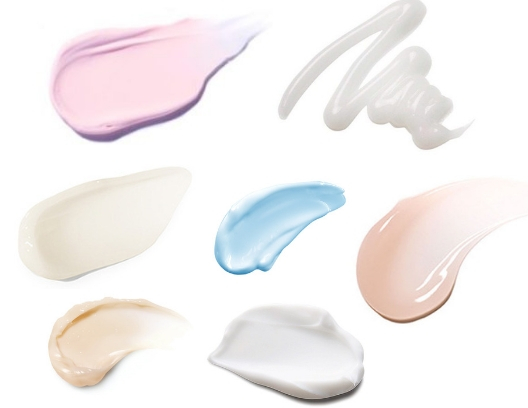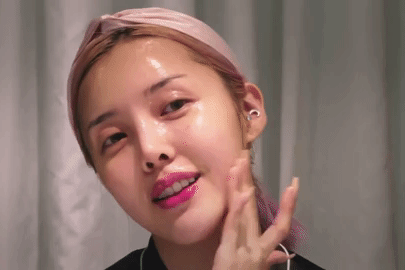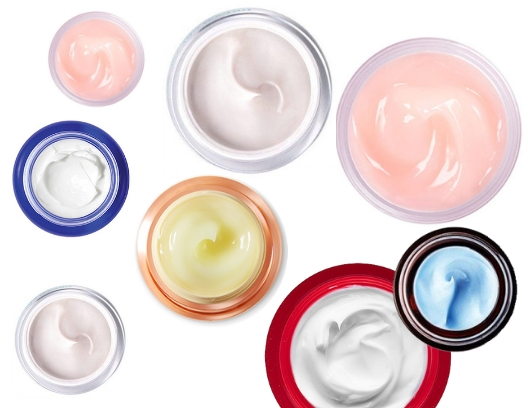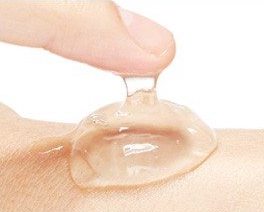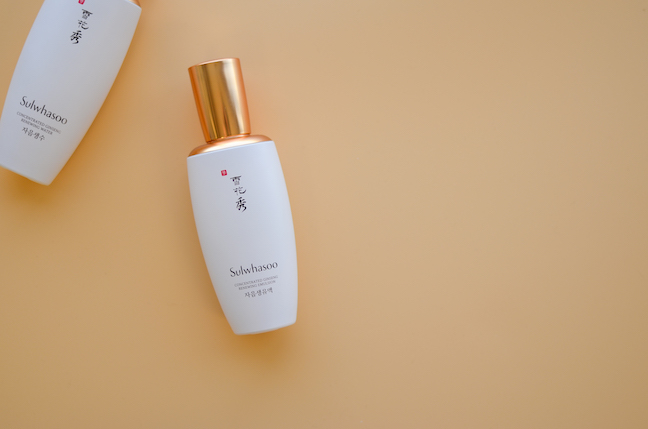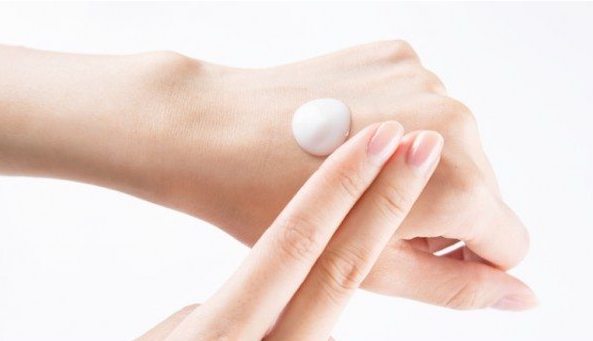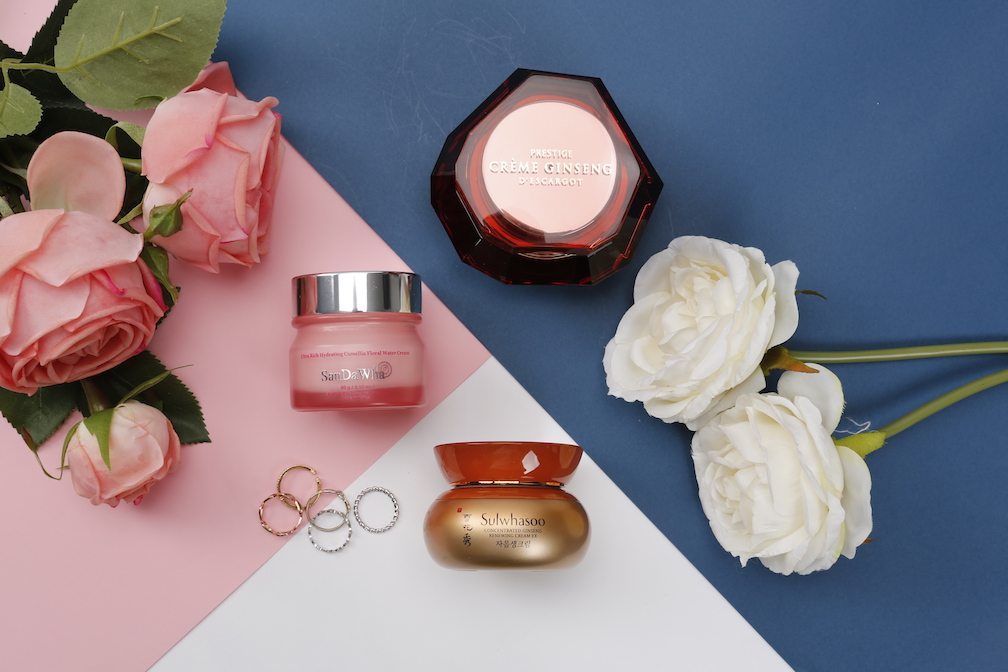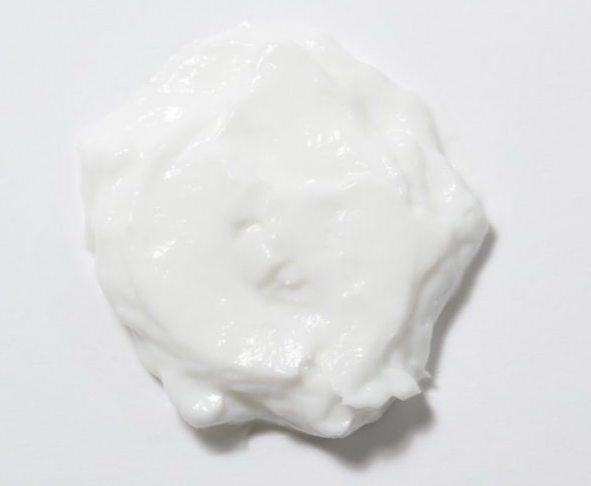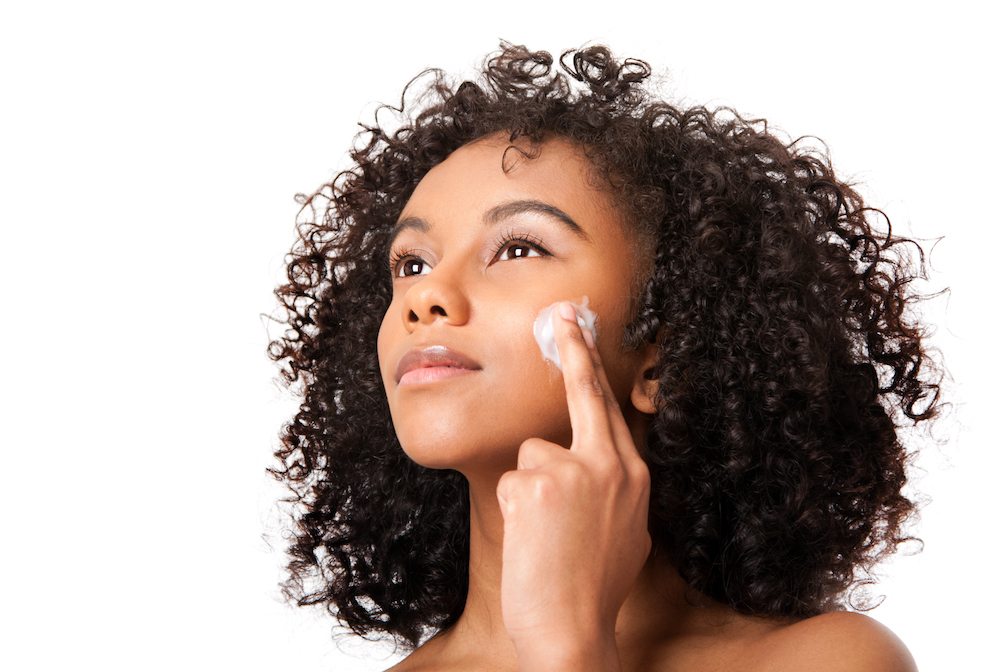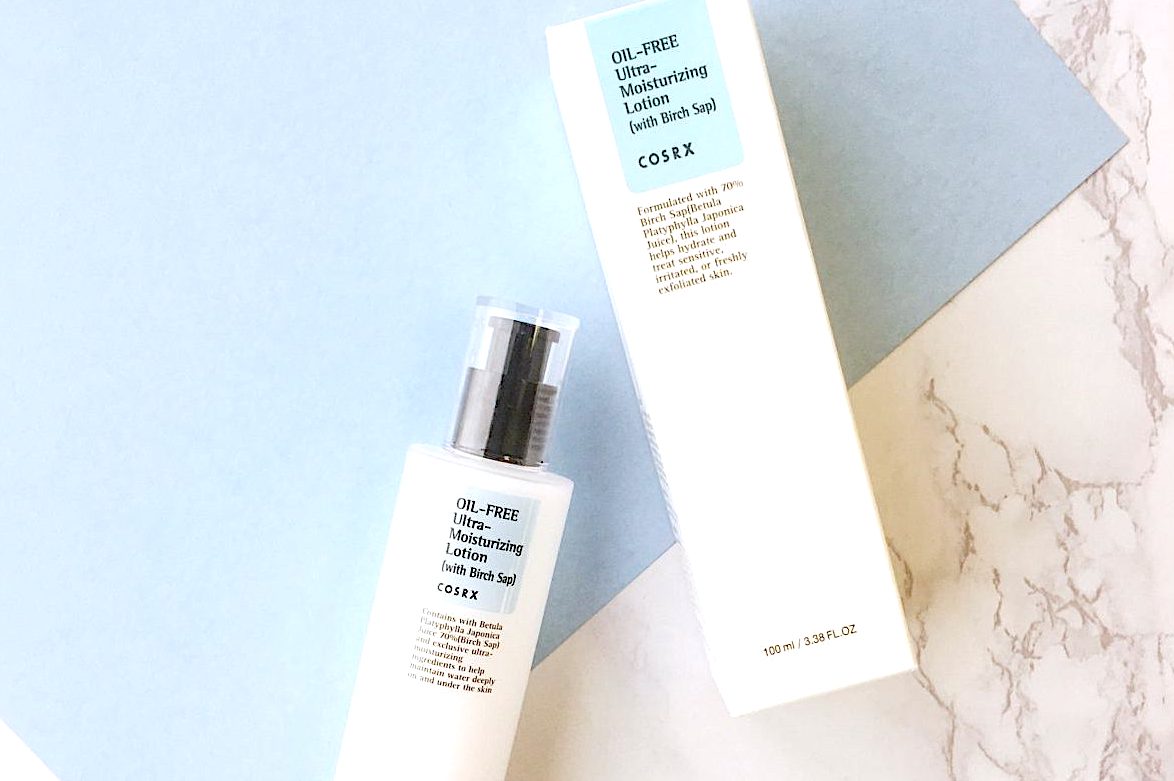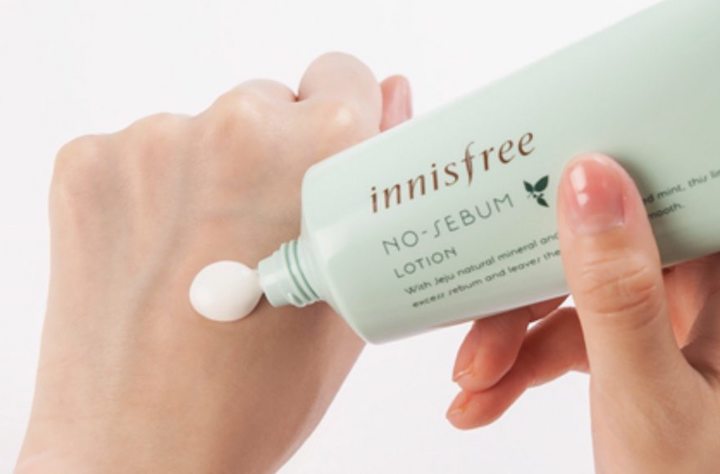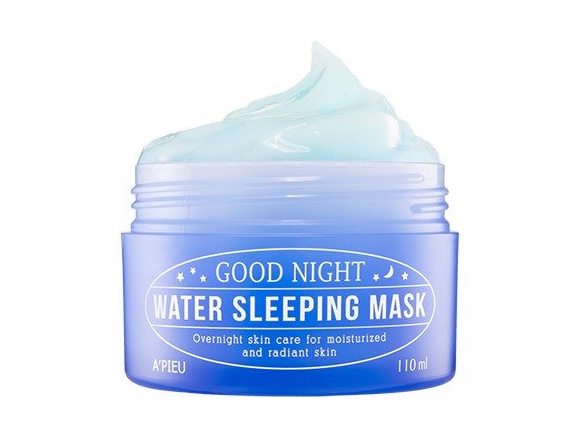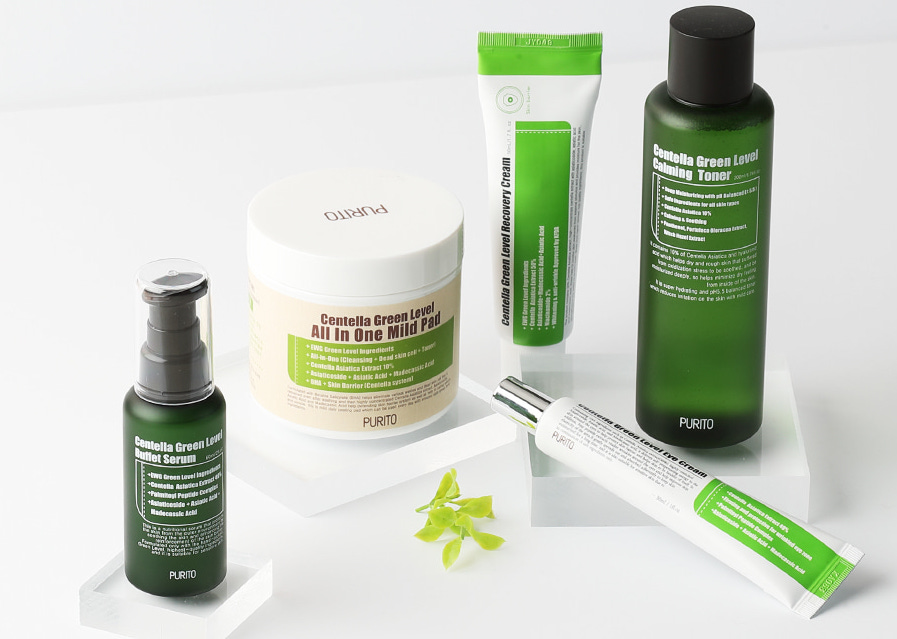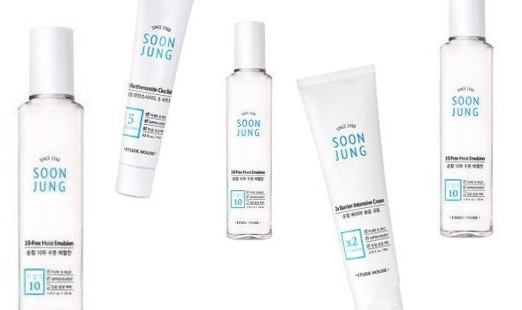K-Beauty Moisturizers 101: From Emulsions to Balms & Everything in Between
Finding the right moisturizer is like finding the perfect pair of jeans — unnecessarily hard yet oh-so worth the effort because once you do, it’s life-changing. But since there’s no such thing as one moisturizer fits all, especially in K-beauty, here’s everything you need to know about moisturizers to do right by your skin.
Keeping skin moisturized is the golden rule of skincare. And since there is an oversupply of moisturizers on the market, finding Mr. Right should be easy! Or so one would think.
Sadly, you can’t just slather on any moisturizer — even one with rave reviews — and expect glowing results. When it comes to this imperative step, another girl’s treasure can be another one’s trash.
But take heart because finding the best moisturizer for your skin isn’t impossible. Challenging, yes, but you don’t need to “learn the hard way” just to find the one. To skip past the trial and error stage, here’s a crash course on what a moisturizer actually is, what kinds of moisturizers there are, and which K-beauty moisturizer works best for each skin type.
What is a moisturizer?
First things first, it’s important to know that moisture is crucial, vital, paramount — you get the idea — to healthy skin, no matter what skin type you have. The outer layer of our skin, the stratum corneum, is a web of fatty acids, lipids, and water. In fact, our skin is made of 64% water! Sadly, the cold, heat, stress, aging, life all suck away at skin’s moisture level, and the resulting dryness leads to breakouts, oiliness, irritation, and signs of aging.
That’s why we turn to moisturizers to help our skin do its job and prevent such atrocities, or at least delay some of these inevitables. “Moisturizer” is an umbrella term for gels, lotions, creams, and ointments that you apply topically somewhere near the end of your skincare routine, usually after toner, essence, and serum. Good moisturizers serve three main purposes: to reduce water loss, add moisture to the outer layer of skin, and repair skin’s natural barrier function.
But not all moisturizers are created equal, so it’s important to know what’s inside your product.
What should I look for in a moisturizer?
There are plenty of moisturizers to go around, but getting familiar with the three main moisturizing agents can be key to figuring out which product may work best for you.

Emollients
Typically oil-based, emollients boost the stratum corneum’s water retention powers by filling in the gaps that occur between skin cells when skin is dry. These crevices are the culprit behind rough, crackly skin, so as more of these spaces are filled, the surface of skin becomes smoother and more hydrated.
Many moisturizers contain emollients — shea butter, squalane, dimethicone, and ceramides being some of the most popular.
Thanks to their soothing, smoothing properties and oil base, emollients are great for dry or dehydrated skin.
Humectants
Humectants, the holy grail of hydrating ingredients, pull moisture from the environment and from the deeper layers of skin to help hydrate the surface. This water-pulling action increases the water content in skin, which in turn helps skin’s natural ability to attract and retain moisture. Some of the most loved humectants are glycerin, AHAs, aloe vera, and hyaluronic acid.
These crowd pleasers are suitable for most skin types since they aren’t heavy oils, and they’re usually formulated into a lightweight texture that makes them especially suitable for oily skin. Humectants also perform particularly well in humid climates where there’s a lot of water in the air.
Occlusives
Usually last in the skincare routine but definitely not least, occlusives basically seal the deal. They form a protective layer over skin, preventing the loss of all the moisture acquired from the previous skincare steps, as well as the hydration that was already naturally existent in skin.
Some of K-beauty’s favorite occlusives are lanolin, lecithin, rose hip seed and avocado oils, and beeswax.
A cautionary note: Occlusives can lead to breakouts in oilier or acne-prone skin types since they scale on the heavier side. These heavy hitters are best for dry skin or for overnight application in dry environments.
Want all three moisturizing agents? Good news is you don’t have to choose between emollients, humectants, or occlusives. There are plenty of moisturizers that contain a blend of the hydrating agents above so you can keep your skin smooth, moisturized, and protected.
Gels, emulsions, and creams, oh my! What’s with all the different names?
Now that you know what a moisturizer is and what it should do, you’re sold. In fact, you’ve opened up a new page and you’re shopping around for one. But then you’ve come across some roadblocks — terms like “emulsion,” “gel,” “lotion,” “cream” — and you’re lowkey overwhelmed.
Give up not! We’re almost there. Just know that moisturizers can be roughly categorized on a spectrum that starts with water and ends with Vaseline. Water on its own doesn’t protect skin too well and evaporates rapidly, while Vaseline (or petroleum) is too thick and sticky for most people to slather on their faces every day. Hence, the need for other types of moisturizes like lotion (which in its very basic form is water plus some Vaseline) and cream (which, simply put, is lotion with even more Vaseline). Of course, other ingredients are added to benefit the skin as well as preserve the freshness of the product.
The K-beauty industry offers quite an array of various moisturizers that can crowd this spectrum, thanks to both technology and tbh some shrewd marketing tactics. Either way, at the end of the day, gel creams, water creams, jellies, and what not still fall somewhere along this range depending on the formulation and texture.
So what exactly is what? Let’s sort through some of the most popular K-beauty moisturizer varieties.
Water Cream, Gel Cream, Jelly Cream
Goodness gracious. What’s next, water gel cream? Oh wait, that’s already a thing. Clever names aside, these are all water-based moisturizers that boast a lightweight, watery, and gel-like consistency. They’re bouncier than lotion, jigglier than regular creams, and above all, super hydrating.
Free from oils, butters, and other thickening ingredients, gel moisturizers spread easily and absorb into skin rather quickly without leaving a greasy finish and without clogging pores. Contrary to popular belief, they are just as powerful at moisturizing skin as their heavier counterparts are. They do evaporate faster than richer creams, but because many water creams are formulated with a high content of hyaluronic acid and other active humectants that attract and retain moisture, what’s left behind is hydrated and well-protected skin. So if you’re into that dewy, I-just-showered look, then you’ll love these jello-like products. Also, most water-based products contain other beneficial ingredients that boost absorbency and target some sort of skin concern, like anti-aging.
Emulsions
Lighter than a lotion and regular cream but thicker than an essence or serum, emulsions can be a bit confusing because the K-beauty industry isn’t always consistent with the use of this word. First, they can come in various textures and forms, from slippery liquids to gel-like liquids. Next, some brands instruct users to apply their emulsion before serums (like Sulwhasoo), while other brands recommend applying after. But bottom line, emulsions are lighter and more absorbent than creams. As for when to use them, a safe general rule of thumb is to either follow the brand’s how-to’s since each product is formulated differently, or layer on after serum and before cream.
Emulsions are mostly water-based but also consist of some oil ingredients, which helps to replenish and balance out skin’s oil and moisture levels. They can also seal in the hydrating and nourishing benefits of the products in your previous skincare steps. And thanks to endless formulations and ingredients that can be added in, emulsions also offer a host of other benefits to skin, from brightening and sebum-zapping to anti-aging.
Lotions
Lotions are generally thicker than emulsions but thinner than regular creams. They’re also mainly water-based with some oil blended in but have a much higher water content than creams. Hence, they absorb more easily into skin than creams.
Lotions also come in a wide range of formulations and textures to suit a gamut of skin types, but from this step and on, one of the primary purposes is to create a protective seal over skin to prevent dryness and keep everything underneath — moisture and nutrients — nice and locked in.
Creams
Richer, heavier, and thicker than lotion, creams contain a higher oil content and create a protective barrier over skin. Typically applied as the last step in the skincare routine, creams provide a superior defense system for dry skin against the heat, cold, wind, and other harsh elements of the environment while also keeping moisture where it belongs. The result is ultra hydrated and protected skin.
Sleeping Packs
Sleeping packs, also known as sleeping masks or overnight masks, are used as the very last step in the evening skincare routine. They come in a variety of textures, from watery to creamy.
These overnighters also serve different purposes. Some supply skin with extra hydration so skin stays moisturized overnight. Others act as occlusives to seal in moisture and keep out threatening factors. Some even provide gentle exfoliation overnight to help boost skin’s natural self-regenerating abilities.
Balms
Ultra rich, thick, and intensely hydrating, balms are a luxurious blend of oils, waxes, and butters. They are solid but melt into liquid form when massaged into skin. Balms are thus heavier than creams and deliver best results when used in small amounts on specific areas or when exposed to really harsh weather conditions.
Balms may not be as popular because a lot of these products are petroleum-based. Petroleum has received a lot of bad press since it needs to be carefully formulated to remove carcinogens and other harmful elements. But there are safe balms out there, and since balms are basically solid oil formulated without water, they don’t require preservatives to keep fresh.
So what’s the best moisturizer for me?
The answer to this all-important question depends on your skin type and how your skin tends to react to the current season and climate. Once you figure that out, you can use the guide below to help narrow down your search. Just keep in mind that your skin type and needs can change over time.
Dry Skin
If your skin looks lackluster, feels taut, or tends to flake and peel, you likely have dry skin. Moisturizers packed with intense hydrating ingredients like hyaluronic acid, glycerin, squalene and ceramides are ideal for dry skin types as humectants and emollients help skin retain moisture, increase your skin’s water level, and rebuild your skin’s natural barrier.
Also, layering is the name of the game when it comes to keeping tightness and flaky patches at bay, so feel free to apply an emulsion or lotion, for instance, then reinforce and protect that layer with a thicker occlusive cream on top.
Swanicoco Deep Hydrating Smart Wrinkle Emulsion is a smart pick for chronically dry skin. One of the sad results of dryness is premature aging — dullness, fine lines, even wrinkles — and this emulsion combats those telltale signs with an ultra hydrating and glow-imparting cocktail of mineral-rich sea water, hyaluronic acid, and collagen-boosting peptides.
It’s also lightweight in texture so it’s perfect for layering under a refreshingly light cream like COSRX Hyaluronic Acid Intensive Cream. But don’t let the bouncy, light texture of this cream fool you. Concentrated with a jaw-dropping 3,000 ppm of hyaluronic acid and sea buckthorn water, this intense cream delivers deep moisture, strengthens the barrier, and balances out skin’s oil and water levels. It leaves that ever-so-slightly tacky finish Koreans love.
Laneige Water Bank Ultra Moisture Cream is another serious moisturizing cream that delivers ultra hydration. The thick and buttery cream melts on and softens dry, rough skin into baby bottom smoothness, thanks to moisturizing ingredients like shea butter, olive oil, ceramides, and ionized water. The result is stronger, more protected, and healthier skin.
View this post on Instagram
Dry skin can easily go, well, dry overnight as you sleep. That’s when overnight masks come to the rescue. Beauty of Joseon Revitalize Sleeping Mask features a fun, fresh, bouncy texture so it feels comfortable on skin. As you sleep, the cream’s worthy-of-royalty ingredients — ginseng, honey, black soybean, and orchid — firm and hydrate skin while also brightening the complexion so you’ll wake up to healthier, more youthful-looking skin.
Oily Skin
If you have oily skin, moisturizing may be your biggest fear. But facing this fear is key to regulating your skin’s oil production. If skin is too dry, it’ll overcompensate by pumping out even more oil, but if skin is too oily, your pores will clog up and breakouts can ensue. To solve this conundrum, turn to lighter, water-based, or oil-free moisturizers that hydrate without the heaviness and pore-congestion potential.
COSRX Oil Free Ultra Moisturizing Lotion with Birch Sap is a heavensent for such situations. This lightweight lotion is formulated with 70% birch sap, which is loved for its humectant and anti-inflammatory properties. The oil-free moisturizer is also chock full of antioxidants, minerals, and amino acids, making this the perfect pick for skin that’s thirsty for moisture but not for extra oil.
There are also moisturizers designed to eliminate excess sebum and its resulting greasy shine, such as the Innisfree No Sebum Lotion. Part of the brand’s cult fave No Sebum lineup, this lotion employs minerals and mint extract to regulate sebum production and balance out skin’s oil-water levels as well as pH level.
Gel creams are also great moisture mediums for oily skin since they’re usually free of oils and penetrate into skin quickly. Keep Cool Ocean Hydrating Gel Cream is cool and refreshing — it’s actually formulated to rapidly reduce heat and combat inflammation. Advanced Bi-Gel technology also creates a veil of hydration, leaving skin comfortable, soft, and silky.
Ever notice that after a night’s slumber, you wake up with crazy oily skin, as if you had sleep-walked into the kitchen and fried French fries all night? That’s because while you sleep, your skin secretes natural oils to keep your skin moist and supple. It’s nature’s way of moisturizing skin. But if you have oily skin, this could mean way too much oil — and it could also mean that A’Pieu Good Night Water Sleeping Mask is the perfect nightcap for you. Bursting with birch water, marine collagen, and soothing chamomile and lavender extracts, this refreshing water mask forms a moisture barrier over skin, keeping it hydrated overnight so it won’t produce excess sebum in an effort to relieve dryness.
Acne-prone
Not even problem skin is exempt from the great need for moisture. In fact, skipping out on the moisturizing step can lead to dehydration, which is a major cause of breakouts. What acne-prone skin needs is lightweight moisturizers free of most heavy oils, alcohol, added fragrances, and other irritation-causing ingredients.
Everything you’d want in a moisturizer if you have acne-prone skin is packaged up in COSRX Natural BHA Skin Returning Emulsion. Featuring Centella asiatica leaf water (loved for its healing properties) and 70% black bee propolis (a powerful antibacterial and anti-inflammatory), this lightweight moisturizer battles acne and calms irritated skin. Its 1% BHA (beta hydroxy acid) content also helps the powerful formula break through oil to clear out pores and help reduce breakouts and blackheads.
View this post on Instagram
Instead of just plain water, Swanicoco A.C Control Care Emulsion is comprised of tea tree leaf water, known to soothe and calm irritated, acne-prone skin. Hyaluronic acid, willow bark, and fermented soybean help control sebum production, while hydrolyzed algin and ceramide infuse skin with long-lasting moisture. This lightweight moisturizer also helps balance water and moisture levels in skin, keeping breakouts at bay.
Thought creams weren’t for the acne-prone? Think again. Boasting 50% Centella asiatica (read more about the It ingredient for troubled skin here), Purito Centella Green Level Recovery Cream fortifies the skin barrier and addresses all sorts of concerns from dark spots and fine lines to enlarged pores. Mega moisturizing ingredients like argan oil and ceramide deeply hydrate skin, while a powder form of centella helps weakened dermal layers recover and regenerate.
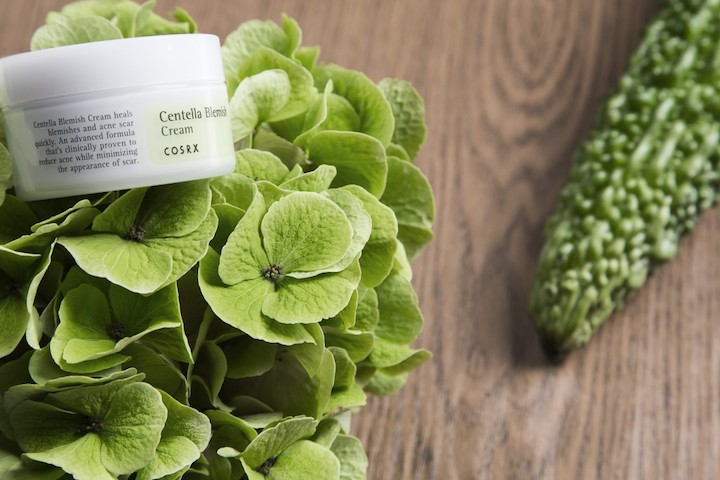
COSRX Centella Blemish Cream is another crowd favorite. Also formulated with Centella asiatica, the cream relieves irritated, inflamed skin while also fading the appearance of scars. Though balmy in texture, the formula is not oily and leaves behind a velvety soft finish.
Sensitive Skin
Extra TLC is necessary for sensitive skin types, so stick to gentle, soothing moisturizers free of parabens, synthetic fragrances, mineral oil, and other ingredients that can irritate skin. It’s also best to opt for products with a minimal ingredient list, because sometimes less is more when it comes to sensitive skin. Also, because different people have different sensitivities to a variety of ingredients, always make sure to patch test before slathering all over your face.
Etude House's Soon Jung line offers a slew of products designed especially for sensitive skin, including an emulsion, cream, and a gel-like balm. All three moisturizers are formulated at the pH level of baby skin and strengthen skin's moisture barrier with a proprietary blend of protective panthenol and healing madecassoside. Crafted with more than 90% natural ingredients and without synthetic dyes, parabens, fragrance, and mineral oils, they are gentle, hypoallergenic, and noncomedogenic — ideal for your sensitive skin's needs.
What are the moisturizers you can’t live without? Any in this post you’d want to try?
Loading...
